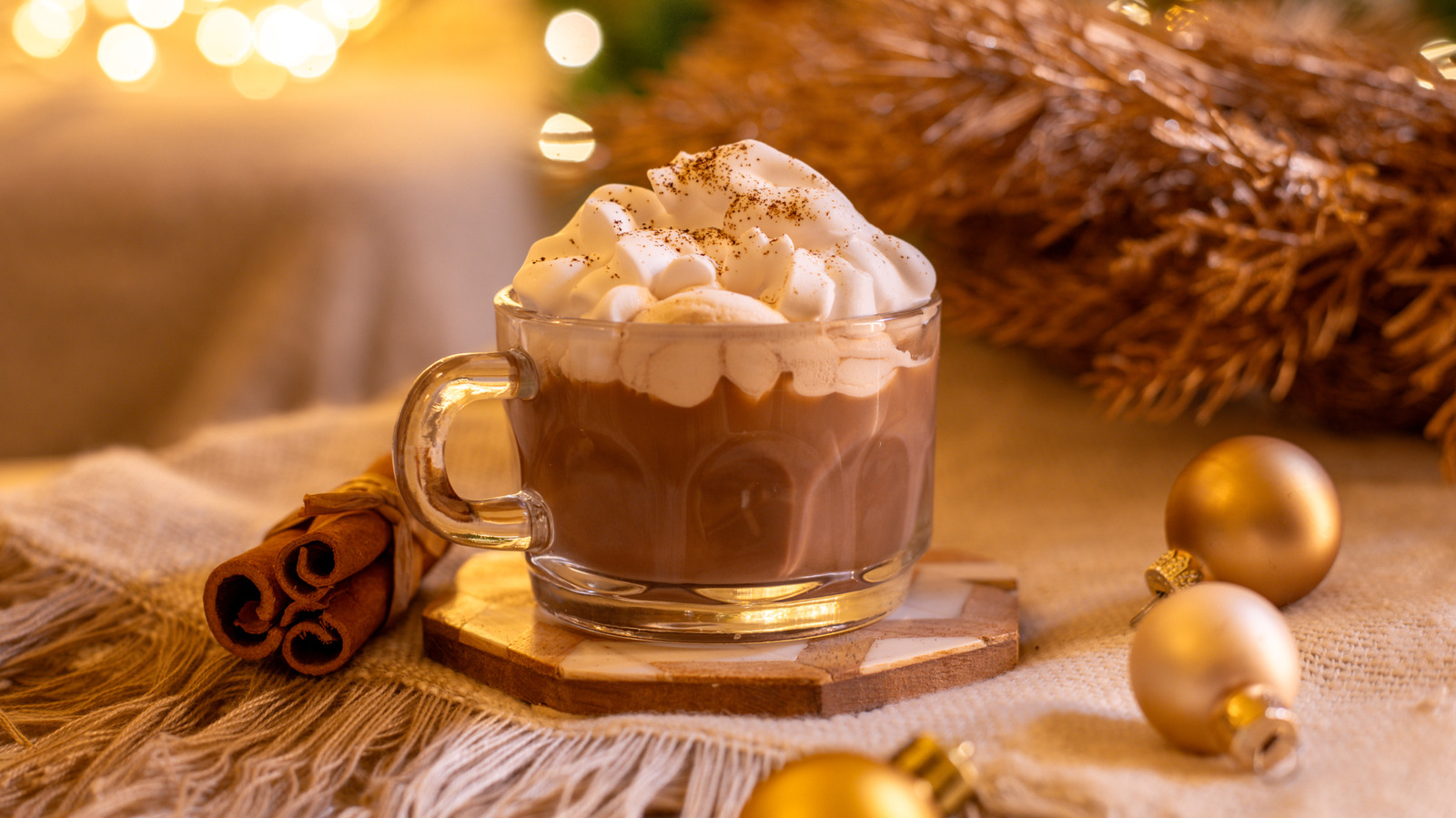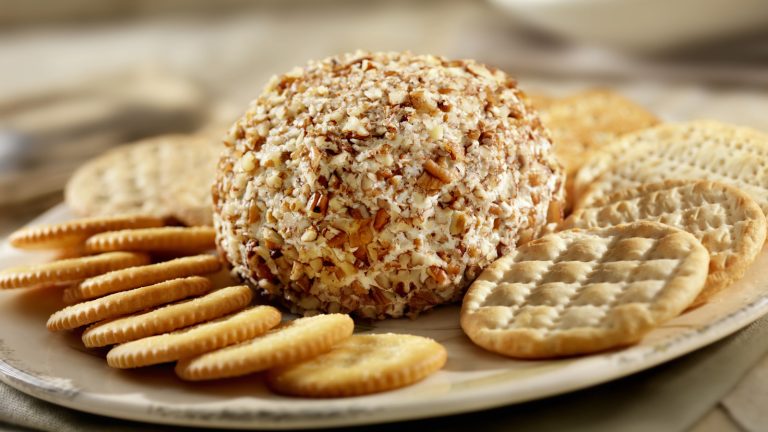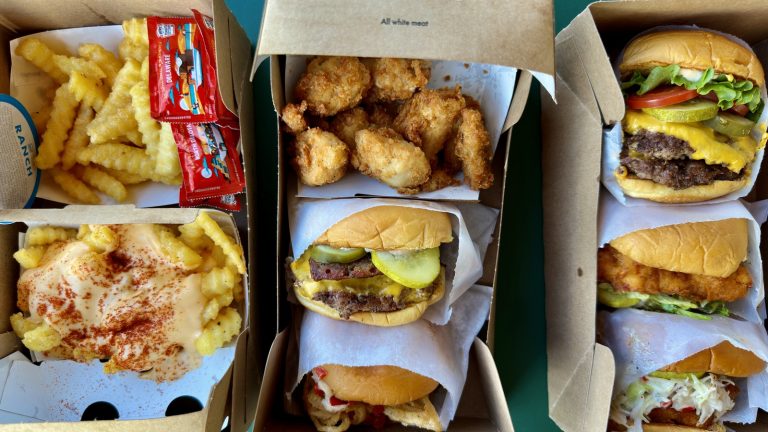No matter what age you are, hot chocolate never loses its appeal. From easy-to-make storebought mixes to using different hacks for restaurant-quality cocoa, a warm, cozy cup of rich, creamy hot chocolate always hits the spot. Apart from using elevated ingredients like sweetened condensed milk for ultra-silky cocoa, it’s hard to imagine how one can improve on such a beloved, classic beverage. Right?
Enter one of the perks of being of legal drinking age: you can use different liquors and liqueurs to take your hot chocolate to the next level. “Chocolate pairs beautifully with a wide array of flavors, so exploring spirits whose flavor profile mirrors these pairings will guide you in the right direction,” says Chris Chamberlain, an award-winning mixologist and brand representative for the Spirit of Gallo beverage portfolio. However, some types of spirits are better than others; some complement chocolate’s natural nutty or fruity flavors, while others provide contrast through zesty spice or refreshing mint. “Hot chocolate is already a rich and indulgent treat, but adding the right liquor or liqueur can take it to the next level, creating a cozy and flavorful experience,” says Cheeky Cocktails founder April Wachtel. Balance is key, though, as Allelo beverage director Ingi Sigurdsson recommends: “It’s also important to watch for balance — many liqueurs are quite sweet.”
We checked in with top beverage experts, from bartenders and mixologists to career food and beverage professionals, to find the best boozy libations to boost your next cup of hot cocoa.
Agave spirits like tequila and mezcal
Pairing hot chocolate with an agave-based spirit like tequila or mezcal may sound extreme at first, but the two can actually go hand-in-hand. “Meso-American/Mexican culture has a long history of cultivating cacao for use in beverages, so it only makes sense…that agave spirits would pair well with hot chocolate,” explains Chamberlain.
Since the flavors of agave-based spirits can vary by terroir or production style, you can take several different routes. Using a reposado tequila like Camarena Reposado — which is aged in oak barrels — can bring out notes of oats, honey, vanilla, and spices, which work well with chocolate. Alternatively, if you want a spirit that contrasts more than complements, opt for a mezcal like Derrumbes Durango, with its smoky notes and tropical fruit-forward flavor profile.
Sigurdsson offers a word of caution, though: “Any agave spirits work well, but I tend to use them sparingly, as they can overpower the chocolate — especially mezcal, which can have a strong smoky character.”
Fernet
If your tastes tend more toward bitter drinks like Negronis, a fernet-spiked hot chocolate will be right up your alley. An herbaceous amaro originally hailing from Italy, fernet is typically served as a post-meal digestif to purportedly aid digestion. Due to its mix of earthy herbs and spices — which varies depending on the distillery and brand — fernet can pair well with sweet sodas like Coca-Cola, coffee and espresso, and now, hot chocolate.
Adding a bitter spirit like fernet with notes of “warming baking spices and medicinal mints” brings “everlasting complexity and earthy bitterness” to hot chocolate, says Brenton Engel, founder of Letherbee Distillers, which produces its own interpretation of the amaro. Engel recommends adding a touch of sea salt as well to bring out the flavors. Apart from a craft fernet like Letherbee’s, Fernet-Branca is a good go-to, as the Italian-made brand is arguably the most famous kind of fernet on Earth.
“The minty bitterness of this amaro plays well with chocolate, but this would be for those who really enjoy bitterness,” advises Sigurdsson. If it’s too strong, “You may also need to add a touch more sugar to balance out that bitterness.”
Green chartreuse
Another fun option for fans of herbaceous liqueurs is green chartreuse, a French botanical liqueur produced by Carthusian monks since the early 1700s. Made with around 130 plants, flowers, and herbs — the exact recipe is a closely-guarded secret — this green-hued, botanical liqueur boasts a complex flavor profile with medicinal, mint, anise, and peppery notes. It’s the herbal tones, reminiscent of chocolate-mint pairings, that make it a novel choice to mix with hot chocolate.
Green chartreuse is a “…surprising yet incredible combination with chocolate,” says Sigurdsson. “This monk-made herbal liqueur has some sweetness, so I often reduce the sugar in my hot chocolate recipe. The experience is like a roller coaster — chocolate hits first, then the herbaceous notes of the chartreuse come in strong on the finish, making you want to go back for more.”
However, green chartreuse can sometimes be hard to find, as the monks that make it have cut back on its production. If you can’t get your hands on the real thing, suitable alternatives include Dolin’s Génépy le Chamois or Faccia Brutto’s Centerbe aperitif. If you click well with herbaceous liqueurs like this, Engel recommends taking things one step further to absinthe: “Absinthe is more adventurous and fun.”
Amaretto
Nuts and chocolate are a natural pairing, with different varieties of cacao boasting nutty undertones and notes, so a nut-flavored liqueur will pair harmoniously with hot chocolate. One of the most popular choices is amaretto, a sweet, almond-flavored Italian liqueur. “Almond and chocolate are a classic pairing, making this an easy and delicious choice,” says Sigurdsson.
Believed to hail from the Saronno comune of Lombardy, Italy, amaretto’s almond notes sometimes don’t even come from almonds at all. Some producers use steeped almonds to achieve the flavor, while others use fruit pits from apricots and peaches. However it’s made, the smooth, nutty notes of the amaretto complement chocolate’s natural nut flavors, as well as blend nicely with the rich, creamy texture of the hot chocolate. A cozy pairing nice for a cold winter’s night, some cinnamon or whipped cream can further enhance this option.
Orange liqueurs
If you’ve ever peeled open the crinkly foil around a Terry’s Chocolate Orange to pick out its orange slice-shaped chocolate segments, then you know that orange and chocolate are good playmates. Riffing off of the natural fruity or citrusy notes in chocolate, an orange liqueur brings zestiness to the mix.
“The citrusy brightness of orange liqueurs cuts through the richness of the chocolate while enhancing its natural fruity notes,” says Wachtel, who recommends several different types of orange liqueur. “Grand Marnier adds depth due to its cognac base, while Combier, a triple sec, brings a more neutral, cleaner hint of vibrant orange zest.”
Orange isn’t the only fruity alcoholic beverage that can pair nicely with hot chocolate. Sigurdsson opts for grape or apple-based brandies like Cognac and Calvados: “I really enjoy these fruit-based liquors; they both add a bright contrast to the dark, rich notes of chocolate.”
Coffee liqueurs
Another no-brainer pairing for hot chocolate is coffee, as any fan of the mocha will tell you. “The combination of chocolate and coffee is a classic pairing,” says Wachtel. In this category, there are tons of options to choose from, especially at the moment, as the espresso martini craze has made high demand for coffee liqueurs (even though bartenders are getting sick of making them).
Wachtel opts for choices like Mr Black Coffee Liqueur and Forthave Spirit’s BROWN Coffee Liqueur. “These liqueurs add a bold, roasted complexity that enhances the chocolate’s richness without overpowering it. Forthave Brown has an herbal touch that adds intrigue, while Mr Black delivers a more intense coffee-forward experience.” A classic choice would also be Kahlúa, one of the most well-known brands of coffee liqueur made with Arabica coffee, rum, and sugar. As Chamberlain recommends looking for spirits that have “rich vanilla or dark caramel flavors,” Kahlúa is an ideal choice with its sweet and smooth texture accented by hints of caramel and vanilla.
Cream liqueurs
When considering which spirits to pair with hot chocolate, a cream liqueur will likely be one of the first options to come to mind. People already enrich hot chocolate with milk or cream for a velvety, rich texture and flavor, so a booze-spiked cream liqueur is a natural next step.
In this category, you can start with popular, well-known brands like Baileys and other Irish creams like Kerrygold (yes, that Kerrygold of butter fame) or Five Farms. “Irish cream liqueur can be very classic,” says Engel. Made with Irish whiskey and cream, it adds complementary flavors to the cocoa and boosts the mouthfeel. “Creamy and smooth with hints of vanilla and whiskey, these liqueurs make hot chocolate even more luxurious and decadent,” agrees Wachtel.
But Irish cream liqueurs are just the tip of the iceberg. You can also try a bourbon cream, with bottlings made by the likes of Buffalo Trace, or a cinnamon-inflected RumChata with rum and rich Wisconsin dairy cream.
Rum
A heady liquor made from distilled sugarcane, rum’s sweet flavor profile is an ideal fit for the already-sugary, luscious hot chocolate. Often aged in oak barrels, it can also bring woody, smoky notes into the mix. With many different kinds of rum, from gold to aged to light, drinkers can also detect hints of caramel, spice, or fruit, depending on the type of rum used.
The big, wide world of rum offers tons of fun flavor combinations to try with hot chocolate. “The fresh coconut flavors of RumHaven Coconut Rum is a beautiful tropical twist on the traditional hot chocolate,” suggests Chamberlain. Sigurdsson recommends a spiced Austrian rum called Stroh, which packs a high-proof punch at 60% ABV. “Since it’s stronger, you can use less without cooling down the hot chocolate. It also has strong toffee notes that meld beautifully with chocolate. Any flavorful rums will also work — aged, spiced, or a black strap rum like Goslings.”
With its sweet notes like vanilla or caramel, rum is also a popular choice as a base for cream liqueurs like Rum-Bar Rum Cream, which is another favorite of Sigurdsson’s. “I’ve had the opportunity to try most of the cream liqueurs on the market, and for me, Rum-Bar stands out as the most balanced,” he says. “The Jamaican rum base contributes a rich, full-bodied flavor that feels harmonious, whereas I often find the whiskey in traditional cream liqueurs is somewhat disjointed from the other ingredients and flavors. Rum-Bar also has a subtle caramel note that sets it apart from Baileys.”
Mint liqueurs and spirits
If you’ve ever grabbed an Andes Chocolate Mint candy as a palate cleanser after dining out or bit into a Girl Scouts Thin Mint cookie, then you know that chocolate and mint go together swimmingly. So it stands to reason that the mix of crisp, refreshing mint and succulent chocolate translates well from candy and cookie to liquid form.
“Mint and chocolate are a timeless pairing, balancing the deep, sweet cocoa with a refreshing, cool contrast,” says Wachtel, who lists peppermint schnapps and Dr. McGillicuddy’s Mentholmint as two of her favorite options. “Peppermint Schnapps is sharp and crisp, bringing a wintery feel to every sip, while Dr. McGillicuddy’s offers a smoother, slightly sweeter mintiness. Either way, it’s a delicious flavor pairing reminiscent of a boozy peppermint patty.” Another choice for creating Christmas in a cup comes from Engel, who recommends creme de menthe. “It can be fun to use creme de menthe, as mint and chocolate are such good friends.”
Whiskey
Whiskey and hot chocolate are both lovely cold-weather drinks, each warming the insides in its own way, so why not bring the two together? Whiskey’s natural grain flavors and added notes from the aging process both come into play when imparting different flavors into the hot chocolate. Depending on the grain, like barley, rye, or wheat, drinkers can detect malty or peppery tones, while the type of barrel used and amount of aging can add vanilla, oak, and caramel elements. When choosing spirits for boozy hot chocolate, Engel offers this piece of advice: “I prefer aged spirits, as the flavors from their respective oak barrels work seamlessly with chocolate.” Whiskey is the perfect choice.
The sky is the limit for which kind of whiskey to try. Both Engel and Chamberlain recommend going the bourbon route, with Chamberlain highlighting a rye-spiced bourbon like Horse Soldier Straight Bourbon. A peated whiskey can bring some earthy, smoky characteristics into play, while a more fruity or floral Japanese whiskey can express the natural fruit flavors of the chocolate.
Berry and fruit liqueurs
From orange to raspberry to strawberry, fruits and chocolate are a winning combination in any form, from boxed chocolates to boozy hot chocolate. While we touched on the merits of orange liqueurs like Grand Marnier above, you can go so much further within the fruit and berry liqueur category. The natural sweetness of the berries and fruit marries well with chocolate, especially as different types of chocolate have fruity undertones.
For Wachtel, she recommends blackberry or raspberry liqueurs like Crème de Mûre and Chambord. “Dark berries and chocolate are a delicious combination, with the fruity berry flavors adding a second dimension and balancing the sweetness of the cocoa.” Sigurdsson also advocates for raspberry and berry flavors: “I like to add contrasting flavors so each element stands out in the drink, especially brighter ‘high notes’ like berries and apples.” He does recommend “using only ½–1-ounce and adding another liquor to boost the alcohol content and not making it too sweet — rum or even fernet would be great.”
Chili liqueurs
If you really want to play around with contrast, you can take a page from the Mayan playbook (or rather, cookbook) and pair your hot chocolate with a spicy, piquant chili liqueur. “Pairing chocolate and spice isn’t necessarily the first combination to cross people’s minds, but it’s an age-old pairing dating back thousands of years to the Mayan empire,” says Wachtel.
She recommends Ancho Reyes, a zesty chile liqueur hailing from Mexico. “If you love a bit of heat, adding the smoky and spicy liqueur Ancho Reyes plays off the richness of chocolate and warms you from the inside out.” Some other options for heat-packing spicy liqueurs are Giffard Piment d’Espelette and Boyd & Blair Ancho Chili Liqueur. While a more unconventional choice, a spicy hot chocolate is sure to appeal to spice food fans.





